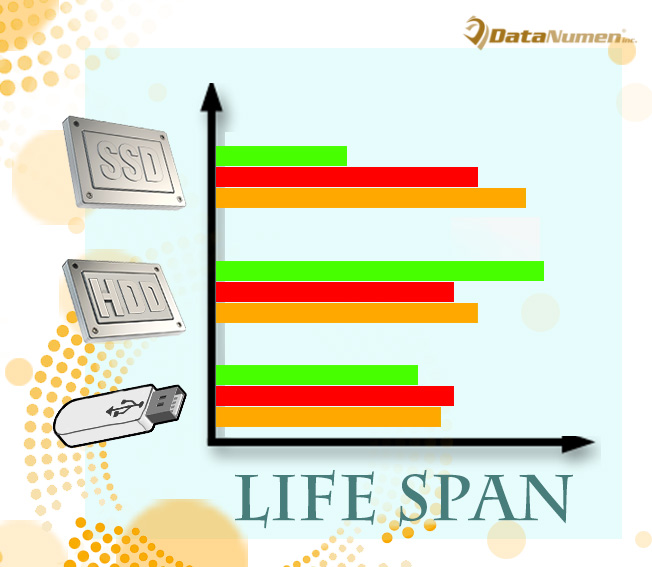When you’re selecting a data storage device, lifespan is one of the most important factors which should be taken into consideration. So this article will delve into the longevity of hard disk drive, solid state drive and USB flash drive.
None is reluctant to accepting such a case that the drive bought not long ago gets corrupted. Drive corruption does not only mean that the drive is no longer usable, but also the internal data will suffer as well. Hence, even simply for the sake of protecting data, you should keep prudent when selecting a suitable data storage device, taking the device lifespan into account. Here we’ll probe into three most kinds of media – hard disk drive, solid state drive and USB flash drive. But, first of all, it is worth mentioning that the lifespan of the three can’t be 100% guaranteed in that there are many negative factors which can speed up drive degradation and even cause drive damage in a flash.

Hard Disk Drive
When it comes to hard disk drive, what is the most noteworthy about this kind of drive is that it contains moving parts. Data getting read in such a drive is through a moving arm with a magnetic drive head. Thus, hard disk drive is susceptible to head crash, namely head touching and scraping the drive platter. Various factors can cause such troubles, such as power outage, physical shock, etc.
According to related researches, about 5 percent of hard disk drives can fail in the first year, but in such cases, culprit are most probably manufacturing defects. As usual, a common hard disk drive can last for around 4 years. Furthermore, if you don’t frequently use this drive (in other words, you just store data to it and then leave it aside), the drive will last longer. Although hard disk drive store data magnetically, as long as you keep it away from other magnetic source, this drive is quite stable. Thus, a hard disk drive is more suitable for long-term storage.
Solid State Drive
Unlike the hard disk drive, solid state drive doesn’t have the moving parts, which are replaced by flash chips. Hence, it is immune from head crash and will not be affected by magnets. But it doesn’t mean that the solid state drive can last longer than hard disk drive. Since solid state drive is made up by electronics, it is quite vulnerable to power failure. It can result in not only file corruption, such as PST damage, but also thorough drive failure.
In normal situation, the lifespan of solid state drive depends on the limited write cycles, such as how many times data can be written to it. When the times run out, solid state drive will fail spontaneously. Due to the fact that solid state drive use flash memory, this type of drive is far more suitable for day-to-day data storage, unlike the long-term storage in hard disk drive. Related studies show that a solid state drive can last as little as 3 months to as much as 10 years.
USB Flash Drive
Similar to solid state drive, USB flash drive uses flash memory as well. Thus it has the similar issues as a solid state drive. More specifically, USB flash drive has no moving parts and is limited to a finite amount of write cycles which are usually from 3000 to 5000. But as USB flash drive usually uses cheaper memory modules, it is less reliable than a solid state drive.
As usual, a USB flash drive tend to fail long before the limit of write cycles run out in that this kind of drive is frequently used to move data from one site to another. In this case, a cheaper USB flash drive is more likely to be susceptible to physical damage. Thus, in normal situation, in terms of lifespan, solid state drive wins.
Author Introduction:
Shirley Zhang is a data recovery expert in DataNumen, Inc., which is the world leader in data recovery technologies, including mdf corruption and outlook repair software products. For more information visit www.datanumen.com